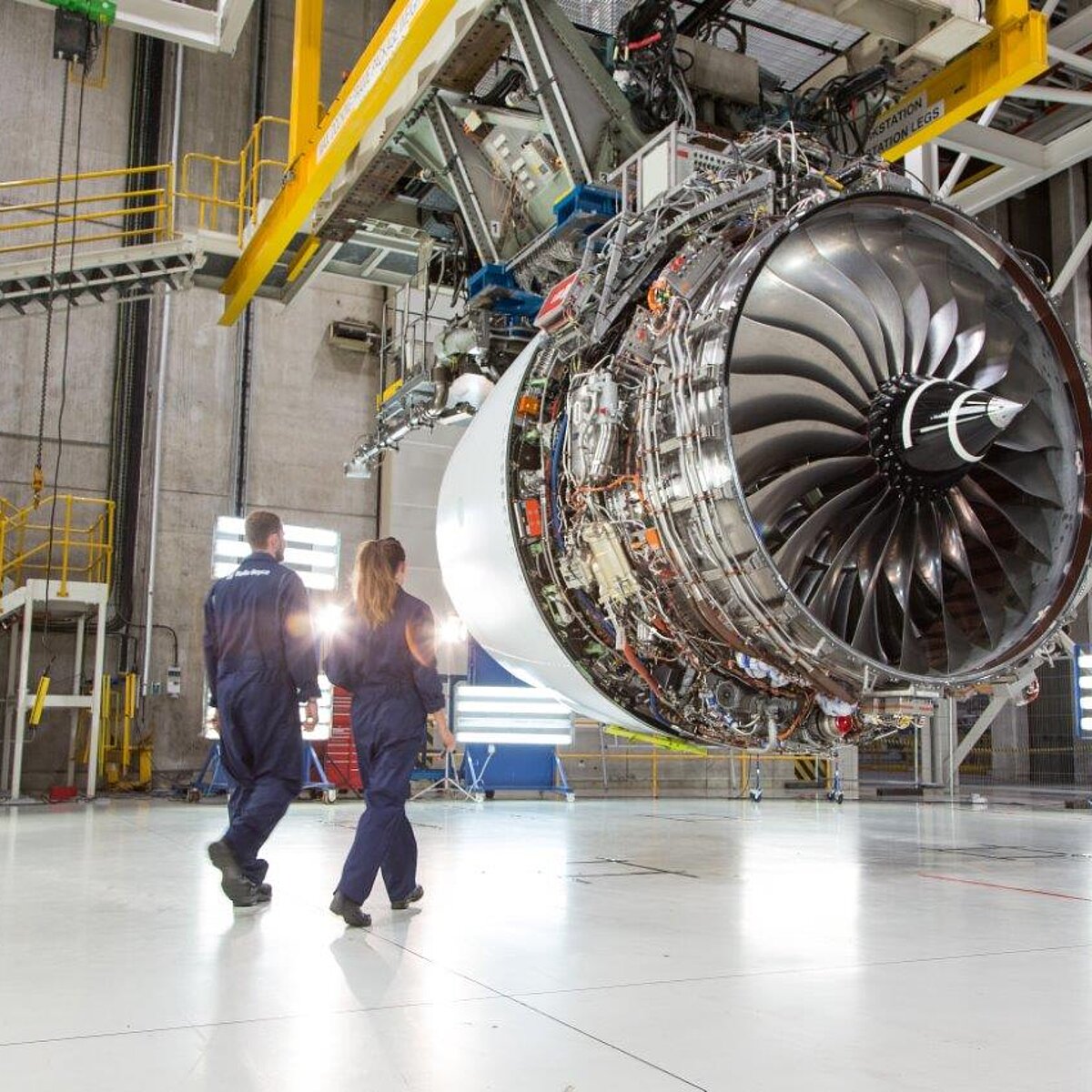Brandenburg is about to become the "Silicon Valley of the aerospace industry"
In the German capital region, preparations are being made to transform aviation from a traditional to a climate-neutral industry. The Berlin Brandenburg region could soon become the Silicon Valley of the aerospace industry.
A reportage by Heiner Siegmund
Large asparagus fields and lush green meadows are located to the left and right of the federal highway 246, which crosses eastern Germany from west to east. Evidently a fertile area. Then a sharp turn to the right and you stand in front of the administration building of Schoenhagen Airport, 90 years old, and located about 35 km southwest of the large BER airport in the state of Brandenburg.
Small airport, large goals
What has been happening for some time now in this historic area is also very fruitful. For example, research is being carried out on the development of low-emission flying in close cooperation with large companies such as the engine manufacturer, Rolls Royce. And not just with this world-famous company. There are 6 different aircraft manufacturers on board, all of which are based in Brandenburg and some of which, Aquila Aviation International, RS Aero, and Cirrus Aircraft, for example, also have branches on the airport grounds of Schoenhagen. In addition, companies such as Avionics specialist ASE, electronics specialist Rhode, as well as service providers and research institutions, like the European Aviation Security Center and the Wildau Technical University, are also involved. A total of 41 different companies have settled on the airport premises or have a representative office there.
Climate neutrality is at the top of the agenda
The Berlin-Brandenburg Aerospace Alliance (BBAA) coordinates a wide range of research and development activities. It is an association led by Professor Andreas Timmermann, combining the interests of the regional aerospace industry, whose members network with key people from the worlds of business, science, and politics and – their most important task – drive innovation.
A core topic of the cluster, which has its nucleus in Schoenhagen, is the experimentation with synthetic fuels to reduce CO2 emissions in air transport. “We even want to reduce greenhouse gas emissions to zero,” he says, setting BBAA’s ambitious target for Schoenhagen. While he says this, he points to the end of the runway and the approach area with the approach lighting. "The ideal area for the construction of a 12-hectare photo voltaic system, in order to obtain hydrogen by electrolysis using solar energy. The approval process for the construction of the solar park is already underway," explains Dr. Klaus-Jürgen Schwahn, Head of the airport. Technically, too, the course has been set and the first tests have been completed. A location was found for an electrolyzer to convert power to gas. The advantage of this project, which focuses on local conditions, is: The hydrogen produced on site can be used to directly fuel aircraft servicing Schoenhagen or to produce synthetic fuel, whatever is needed. The liquefied gas does not need to be transported over long distances from production to the user, which in turn would cause CO2 emissions. It is an important building block on Schoenhagen’s path to CO2 neutrality.
[...]
Yet, what can other - even larger - commercial airports learn from the example of BBAA and Schoenhagen? They can produce hydrogen autonomously, using solar panels that are placed on open spaces within the airport grounds, on the roof of passenger terminals and cargo halls, thus providing the necessary electricity to generate hydrogen. A concept that Patrick Muller, Senior Vice President Operations of Flughafengesellschaft Berlin-Brandenburg (BER), finds worth considering and promptly spoke in favor at the meeting in Schoenhagen of a cooperation between BER and BBAA to work on airport climate neutrality. As a first step, Timmermann and Schwahn will soon present their concept to the management of BER, to encourage the transformation of Berlin's major airport into a climate-neutral airport. This will likely be in the presence of CFO Aletta von Massenbach, who will become the new airport Managing Director in OCT21. She will succeed Engelbert Lütke Daldrup, who is retiring in SEP21.
Brussels is involved
In the meantime, the cooperation of the Berlin-Brandenburg Aerospace Alliance extends far beyond east Germany. For example, the Schoenhagen project is integrated into the European AirDROME consortium, consisting of 19 partners from 9 European countries aimed at creating low emissions airports. "AirDROME is part of the EU Commission's Green deal," said Hugo Duchemin of Paris-based consultancy Comworxx S.A.S. It coordinates local and national activities with the aim of ensuring the climate neutrality of airlines and airports. “Our aim is to make climate-neutral aviation a reality within the EU, the faster, the better,” Mr. Duchemin set out the AirDROME guidelines at the meeting of leading aviation experts at Schoenhagen Airport last week. A statement supported by the other participants.
This article has been pubslihed earlier by Cargo Forwarder Global.
Your Press Contact:
airliners.de
Phone: +49 (0)30 65799841
Email: redaktion(at)airliners.de
Website: https://www.airliners.de/reportage-brandenburg-silicon-valley-luftfahrt/60613
